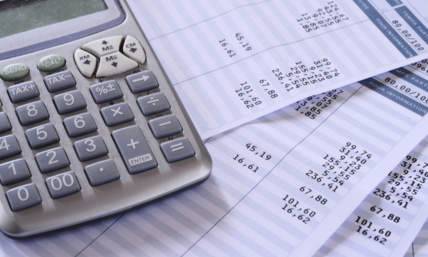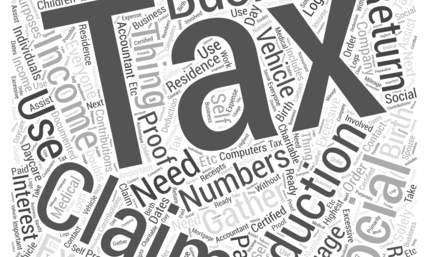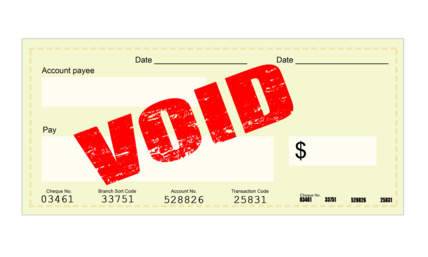What Are Accounting Source Documents?
Whenever a business spends or receives funds, this leaves a paper trail that comes in many forms and is used as evidence that the transaction occurred. With these available, an accountant can complete an audit or use it in the bookkeeping process.
While these processes can be thorough and time-consuming, there are documents that some may need to learn to apply for these checks to be made in the first place, which could get overlooked.
To find out what these are and how accountants or bookkeepers use them, read on to find out more.
Also read: How to Provide Proof of Income

Examples Of Source Documents
Any document that is evidence of a transaction of some kind is likely needed from a bookkeeper or accountant to balance the books or prepare these for an audit, which usually takes place once per year.
Examples of these documents include:
-
Invoices, including sales and purchasing
-
Receipts
-
Deposit slips
-
Purchase orders
-
Employee time cards
-
Credit and debit memos
-
Checks, which include registers and copies
-
Delivery dockets
-
Payment advice
-
Statements
-
Leases and contracts
-
Payroll reports
-
Banking statements
Also read: Wage Vs Salary

What Information Do They Have?
While the above list isn't exhaustive, specific details of these documents make them applicable to a bookkeeper or accountant, as they have information that makes them authenticated.
These details include the date, a description, the total amount, and the signatures of a transaction. For them to be used, they need to be legible, original, accurate, and contain attributable and originator information.
This is so that the accountant can follow the code of practice that doesn't include a judgment or bias that could override any business or professional practice. For an audit, this is even more important.
Also read: Proof of Income for a Mortgage
The Importance Of These Documents
Whether a business purchases office supplies or hires additional staff, these processes require documentation, so this can outline to an accountant the purpose and the cost of this transaction, as well as being able to organize and control your documents.
Suppose any documentation is missing or isn't accurate. In that case, these costs can affect your tax return as it may not be accurate, and you may over or underpay, both of which carry severe penalties and can lead to you paying interest on any additional sums.
That is why your accountant and the IRS should be aware of any excessive write-offs, unreported earnings, and refundable tax credits. It ensures that your audit is done under the correct threshold where you may earn or spend a certain amount.
The Digitization of Source Documents
Some documents may only be recorded on a database or entered into a digital form, so something like the number of hours an employee worked is usually entered into a timekeeping or electronic system.
You can go one step further and do this for other paper-based documents like receipts or statements and turn them into PDFs, photos, or e-bills. This can save you time and have a filing system that is more centralized.
This method is accepted in several countries and can be used with document collection and management services. The auditor only has to look at one place and can save some preliminary steps in the auditing process.
Why Is Document Management Important?
Over the course of a year, a business can have hundreds and even thousands of these documents, and they can be internal or externally made, as some owners and individuals may need to learn what documents fall under this category.
Instead of just having a collection of paper or digital documents, you can use management software that can number and apply filters to them, so you know where they are when you or an accountant need access.
You can also use these services to give you a detailed expense report. You can split them between personal and business, which is especially important when applying certain expenses towards specific tax categories.
Also read: How to Save Money For a Car
How To Ensure Documents Are Authentic
While taking photographs of your receipts and expenses can be a good way of data management, it's also important to know what to capture this way and how to make sure that it can be used in an audit in the first place.
The first thing you should consider is that not everything you have down as evidence can be used to be deducted from your taxes, so instead of scanning every piece of paper you have, make sure you know what it is and if it can be deducted from your tax return.
As soon as you receive a document of this type, be sure to take a picture or get a digital copy so if you need to claim back the funds or return something under warranty, it won't come up as a discrepancy when an accountant is doing the background work for your audit.
Whenever you have a document that falls under the examples above, be sure to scan and take a picture of it correctly. You should be able to see details like the vendor's address and name, the date of purchase, and the amount you paid.
Also read: What is the 50 30 20 Rule?
Documents For Client Relations
Whether you have a returning or one-off client, you want any invoices to be as smooth as possible, as you don't want to be contacting them for more details, which is why efficient document management is essential.
How you deal with a client can reflect on your business as a whole, as you want to be as transparent and value-for-money as you can be.

Closing Thoughts
There may still be some ambiguity over the documents themselves. Still, if you contact an accountant or tax preparer, they should be able to run through everything you need, so you can have it all accessible when the audit occurs.
With some practicality and flow to your management system, you can optimize more of your businesses in how it deals with these documents, which could save you time and money.
Your check stubs can be a great way for you to keep track of your finances so you can easily add the figures to your spreadsheet.















